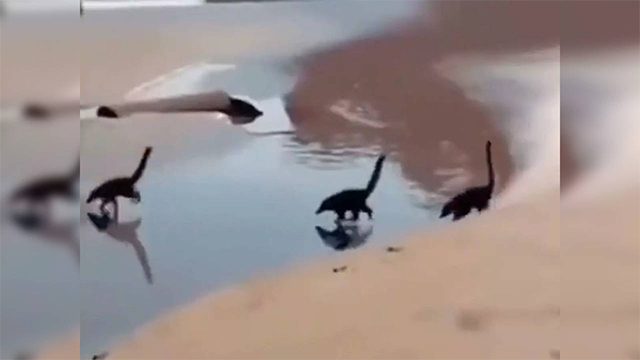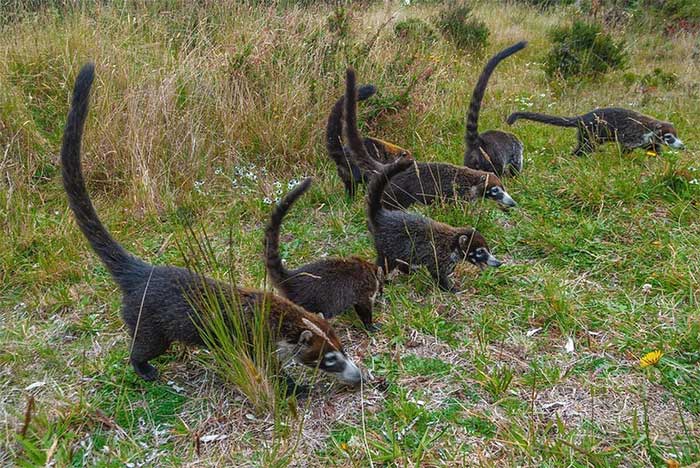A viral clip of a group of dinosaurs running on the beach has taken social media by storm, attracting tens of millions of views. The truth behind this clip has left many people astonished.
The 14-second clip was shared by a user on Twitter, showing a moment when a herd of animals runs along the beach. Due to the backlighting in the video, the animals are not clearly visible, but what caught many people’s attention is that these animals have body shapes resembling that of juvenile long-necked dinosaurs.

Many netizens have debated about the creatures appearing in the clip. (Screenshot from the clip).
The clip quickly went viral on social media, garnering over 10 million views and hundreds of thousands of comments and shares.
Many netizens debated the identity of the creatures in the clip. Some believed it was a video using special effects to “revive” ancient dinosaurs, while others argued that it was merely an unknown creature that resembled a dinosaur.
“I showed this clip to my 9-year-old son, and he thinks these are newborn dinosaurs. But clearly, even if they were newborns, dinosaurs wouldn’t be this small,” commented a Twitter user.
However, many keen observers, after closely watching the clip, realized the truth behind it.
According to them, the clip actually captures a group of coatis running on the beach, but it has been edited in reverse. The tails of these coatis, which point upwards as they run and are reversed in the video, make them appear like long-necked dinosaurs.
“If you want to know what these creatures are, try reversing the video,” a Twitter user commented, along with a reversed version of the clip compared to the original. “I don’t know exactly what this animal is, but it’s clear they are not dinosaurs.”
“The clip took me a moment to realize the truth,” commented another netizen. “If you look closely, these are coatis, a member of the raccoon family. Coatis often hold their tails upright when moving, especially in areas with tall vegetation, helping individuals in the group see each other and stay on course.”
The clip processed back to its original state clarifies the identity of the animal.
Coatis are a species of raccoon found in South America, Central America, Mexico, and the southwestern United States. Adult coatis can grow up to 69 cm long from head to tail, with tails that can measure up to 30 cm. Adult coatis typically weigh between 2 to 8 kg, similar to a domestic cat, with males often being twice the size of females.

A clear image of the coati. (Photo: Raul Cole).
Coatis have long snouts resembling those of pigs, earning them the nickname “pig-nosed raccoons.” They are intelligent animals with strong limbs for climbing and digging. They prefer elevated areas, such as the canopy of tropical forests, and are active both day and night, but are not strictly nocturnal.
Coatis are omnivorous, eating fruits, various fish, lizards, small rodents, birds, bird eggs, and even crocodile eggs. In the wild, coatis have a lifespan of about 7 years, while in captivity, they can live up to 14 years.





















































